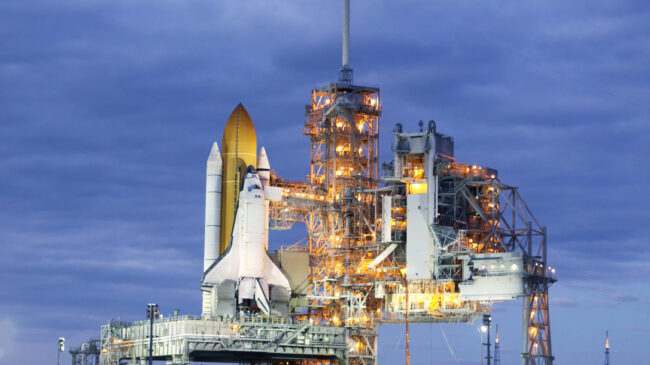In 2019, the global space industry reached a market value of $423.8 billion and, before the coronavirus pandemic, there were predictions it could grow to as much as $1 trillion by the end of this year.
Despite increased investment in space operations world-wide, space policy was hardly included in President-elect Joe Biden’s policy planning discussions. As The Verge put it, “The Biden campaign has said virtually nothing about how the president-elect would set space policy, other than noting that climate change and Earth science would be a big focus of the upcoming administration.”
We do know that NASA’s current chief administrator, Jim Bridenstine, announced he will be stepping down as the organization’s top executive after Biden takes the oath of office. And some space professionals have predicted Biden will likely look to appoint the first female NASA administrator in replacing Bridenstine.
The Biden administration recently released its National Aeronautics and Space Administration transition team which includes a multitude of experienced and respected space professionals. Not only will this team help advise Biden on who the next NASA chief appointee should be but should also help lay the groundwork for Biden’s NASA policy and transition the agency to fit these goals.
Included in Biden’s transition team is Pam Melroy, who may be a promising fit for NASA administrator for those hoping for an embrace of public-private partnerships and private space operations. As a retired NASA astronaut, Space Shuttle commander, jet pilot for NASA and the Air Force, and now chief executive officer of Melroy & Hollett Technology Partners, her expertise includes both government and private sector space leadership. Melroy’s experience includes serving as deputy director of the Tactical Technology Office at the Defense Advanced Research Projects Agency, acting deputy associate administrator of the Federal Aviation Administration, senior technical advisor and director of field operations for the FAA’s Office of Commercial Space Transportation, deputy director of Orion Space Exploration Initiatives at Lockheed Martin, and advisor to the National Space Council.
Melroy’s experience developing international relationships during her time as an advisor to the Australian Space Agency would also prove to be beneficial as the next head of NASA tries to navigate the recently signed Artemis Accords—a bilateral agreement between the U.S. and seven other countries, which outline a new set of principles that each nation will apply to future asteroid and comet missions, activities in orbit around the moon and Mars, and the Lagrange Points of the Earth-moon system. The accords are vital to the development of international space law and sustainable space development.
The guidelines in the Artemis Accords uphold and share many of the same values as the Outer Space Treaty set forth by the United Nations. However, because the Outer Space Treaty is soft law there is little enforceability and incentive to commit to safe space practices as an international community. Under the Artemis Accords, nations can elect to take part in a bilateral contract with the United States that can enforce performance standards on both nations to conform to mutually agreed upon common values.
International partnerships not only benefit civil programs but also benefit commercial space development. As a diplomatic extension of the Artemis Accords, the private space industry may find new opportunities to work with foreign governments. This would benefit both the public policy goals of the U.S. and its international partners, but also drive private companies to expand businesses terrestrially in order to drive innovation past lower earth orbit.
Whoever President-elect Biden selects as the next chief administrator of NASA, it is crucial they support commercial space partnerships that have thrived under the Obama and Trump administrations. These partnerships have proven to be beneficial for our nation and their expansion could free up funds for NASA to focus its efforts on research while allowing private space exploration to thrive.
The Biden administration should also look to maintain programs that allow industry feedback on regulations and space directives. This can be done by retaining the National Space Council and facilitating industry working groups. The National Space Council’s directives have been essential in helping guide pro-commercial U.S. space policy and both the National Space Council and other space-involved agencies like the FAA have provided opportunities for industry feedback in these working groups.

